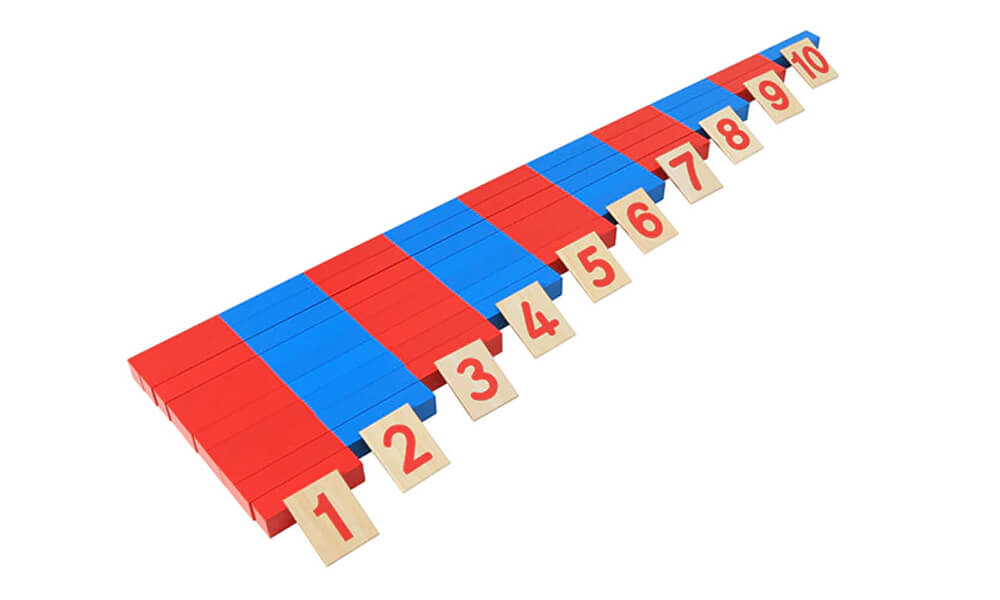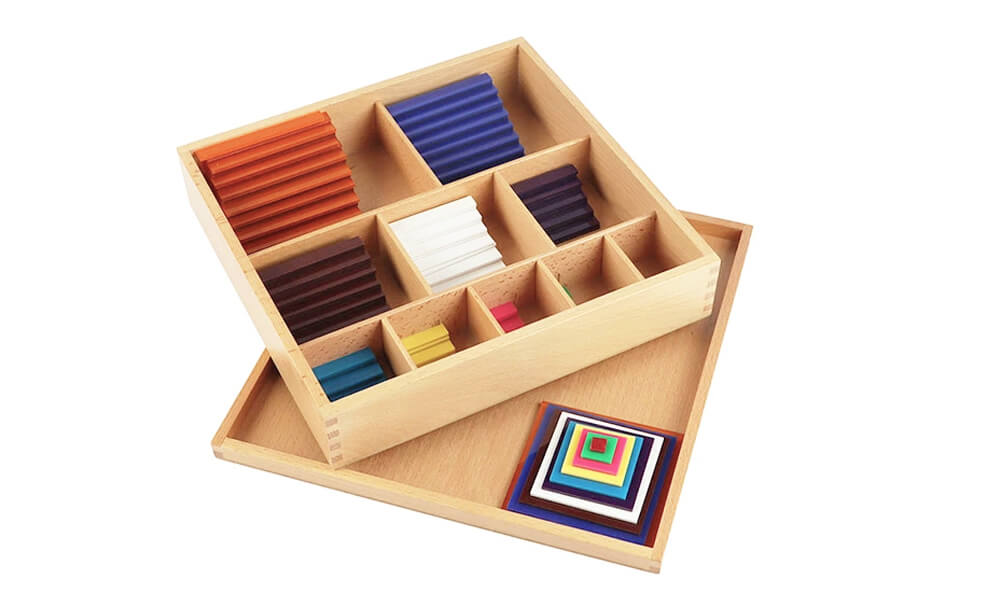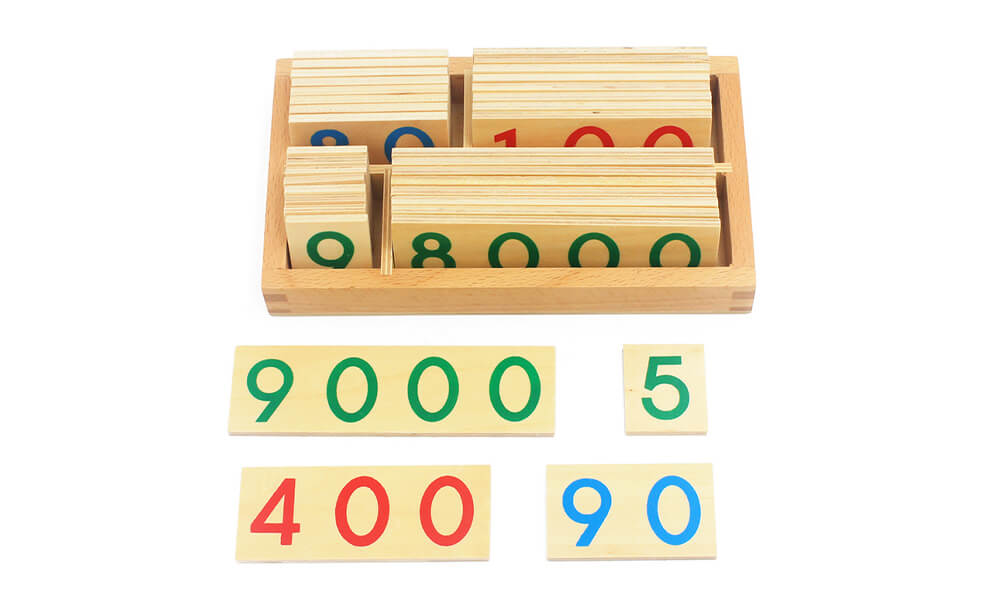Math is an essential part of learning and development, but it’s also one of the most difficult subjects to teach. Fortunately, Montessori math materials can help make the process easier – by providing hands-on activities, visual aids, and other tools for introducing math concepts to students. But how do these materials work? Read on to find out more about the magic behind Montessori math materials and how they can help enhance student learning!
Understanding the Montessori Method of Math Learning
The Montessori method of learning math is a hands-on, child-centered approach that emphasizes concrete experiences and encourages exploration and discovery. Rooted in the philosophy that children learn best through tactile experiences, the Montessori math curriculum is designed to be self-directed. Children work at their own pace, choosing materials that resonate with their interests and learning needs.

These math materials, meticulously crafted to engage the senses, promote a child’s innate passion for learning and understanding. They are sensorial, turning abstract mathematical concepts into tangible experiences. Designed to be self-correcting and manipulative, they allow children to learn through trial and error, fostering a profound grasp of mathematical principles.
The materials are categorized into four primary domains: number, operations, measurement, and geometry. Each category is replete with a variety of tools that offer children opportunities to explore mathematical concepts in a hands-on, concrete manner, truly embodying the Montessori ethos of meaningful, self-directed learning.
-
Number
The number materials help children develop an understanding and introduce the concept of quantity, symbols, place value, linear counting and the decimal system. Some of the best Montessori math materials in this category include :
| Material | Description | Purpose |
|---|---|---|
| Numeral Cards | Cards with numbers and corresponding quantities. | Recognize numbers and associate with quantities. |
| Golden Bead Material | Beads representing units, tens, hundreds, and thousands. | Understand the decimal system and place value. |
| Stamp Game | Stamps representing units, tens, hundreds, and thousands. | Hands-on exploration of the decimal system. |
| Spindle Box | Box with compartments and spindles. | Associate numbers with quantity and understand zero as the absence of quantity. |
| Number Rods | Rods with sections colored alternately red and blue, representing numbers 1 to 10. | Grasp linear counting and understand length in relation to number. |
- Operations
The operations materials help children understand the basic operations of addition, subtraction, multiplication, and division , along with skip counting. The best materials in this category include :
| Material | Description | Purpose |
|---|---|---|
| Addition Strip Board | Board with colored strips representing numbers. | Visualize the process of addition. |
| Subtraction Strip Board | Similar to the addition board but for subtraction. | Visualize the process of subtraction. |
| Multiplication Table | Grid for understanding multiplication. | Hands-on practice for multiplication. |
| Division Table | Grid for understanding division. | Hands-on practice for division. |
| Fraction Circles | Circles divided into different fractions. | Introduce the concept of fractions. |
-
Measurement
The Measurement materials help children understand concepts such as length, weight, capacity, temperature, volume, time, and money. The best measurement materials in this category include :
| Material | Description | Purpose |
|---|---|---|
| Measuring Sticks | Sticks of varying lengths. | Understand and compare lengths. |
| Weighing Scale | Tool for measuring weight. | Grasp the concept of weight and compare different objects. |
| Thermometer | Instrument to measure temperature. | Understand temperature variations. |
| Clock with Moveable Hands | Clock for teaching time. | Learn to tell time. |
| Metal Insets | Representations of coins. | Understand the concept of money. |
| Knobbed Cylinders (Cylinder Block) | Blocks with cylindrical insets of varying dimensions. | Understand and compare sizes and dimensions. |
-
Geometry
The geometry materials help children develop a visual understanding of shapes, spatial relationships, and geometric properties. The best geometry materials in this category include :
| Material | Description | Purpose |
|---|---|---|
| Geometric Solids | 3D shapes like cones, spheres, and cubes. | Understand three-dimensional shapes. |
| Geometry Sticks | Sticks of varying lengths and angles. | Explore geometric relationships and properties. |
| Geometry Cards | Cards with geometric shapes and properties. | Deepen understanding of geometric shapes and their characteristics. |
| Plane Geometry Set | Set of shapes and tools for geometry. | Dive deeper into geometric concepts and relationships. |
| Geometry Cabinet | A collection of geometric shapes in a cabinet. | Introduce and reinforce geometric shape recognition and vocabulary. |
Benefits of Using Montessori Math Materials

Montessori math materials are meticulously crafted to provide children with a hands-on, sensory-rich experience, promoting exploration and deep understanding of mathematical concepts. By actively engaging multiple senses, these materials not only make the learning process more captivating but also instill a profound comprehension, nurturing a lifelong enthusiasm for learning and discovery.
- Hands-on learning approach: Montessori mathematics materials are designed to be interactive, allowing children to physically manipulate and explore mathematical concepts, which can make the material more engaging and memorable.
- Concrete to abstract learning: Montessori maths materials gradually introduce abstract concepts in a concrete and hands-on way, allowing children to understand and internalize mathematical concepts more easily.
- Self-directed learning: Montessori math materials allow children to work at their own pace and choose their own materials, which can foster a sense of independence and self-motivation in the learning process.
- Multi-sensory approach: Montessori math materials engage multiple senses, such as visual, auditory, and kinesthetic, which can help children to understand and remember mathematical concepts better.
- Develops problem-solving skills: Montessori math materials are designed to help children develop problem-solving skills, encouraging children to think critically and work through mathematical concepts on their own.
- Promotes curiosity and creativity: Montessori math materials encourage children to explore mathematical concepts in a creative and open-ended way, fostering curiosity and creativity in the learning process.
- Builds a strong foundation for math skills: Montessori math materials provide a strong foundation for children’s mathematical understanding, which can lead to greater success in later math classes.
How to Use Montessori Math Materials
One of the most distinguishing features of Montessori math is the use of concrete materials. These materials are designed to help children understand abstract concepts in a tangible way. The use of Montessori math materials should be integrated into the overall curriculum, not just used as isolated activities. Here are some tips for using Montessori math materials:
- Start with basic concepts and gradually introduce more difficult concepts.
- Allow children to work at their own pace and level.
- Encourage children to explore and discover new ideas on their own.
- Make sure that all materials are properly labeled and organized.
- Use the materials regularly and frequently throughout the school day or at home.
- Incorporate the materials into other areas of study, such as language and science, to reinforce their understanding and application.
- Provide opportunities for children to practice and apply the concepts they have learned in real-life situations.
- Use the materials to introduce and reinforce mathematical vocabulary and language.
- Use the materials to encourage critical thinking and problem-solving skills.
- Continuously assess and evaluate children’s understanding and progress to inform future instruction and lesson planning.
Tips for Getting the Most Out of Your Montessori Math Materials
If you’re looking to get the most out of your Montessori math materials, there are a few things you can do to ensure success. First, be sure to carefully read the instructions that come with the materials. This will help you understand how to use them properly. Second, be patient and take your time when working with the materials.
They are designed to be used slowly and deliberately, so rushing through them will only lead to frustration. Finally, don’t be afraid to ask for help if you’re having trouble. There are many resources available online and in Montessori classrooms that can provide guidance and support. With a little patience and effort, you’ll be well on your way to mastering Montessori math!
Popular Montessori Math Materials Examples
There are a wide variety of Montessori math materials available on the market, catering to different age groups and abilities. Here are some examples of popular Montessori math materials:
-
Number rods
These materials consist of a set of 10 rods, each labelled with a number from 1 to 10. The rods can be used to help children learn to count, as well as addition and subtraction. Children can also use the rods to explore mathematical concepts such as place value, base ten, and number operations.
-
Decanomial squares
This material consists of 9 squares, each divided into 10 smaller squares. The squares are numbered 1 to 9, and can be used to help children learn multiplication and division. Children can use the squares to explore concepts such as multiplication tables, fact families, and division facts.
-
Geometric solids
This material consists of a set of 3-dimensional shapes such as spheres, cubes, cylinders, cones, and prisms that can be used to introduce children to basic concepts of geometry. Children can learn about properties such as edges, vertices, and faces.
-
Golden beads
This material consists of a set of beads that can be used to teach children about weight and measurement. Children can use the golden beads to explore concepts such as counting, addition, subtraction, multiplication, and division. The beads can also be used to teach children about fractions, decimals, and money.
-
Fraction circles
This material consists of a set of fraction circles that can be used to help children learn how to identify, compare and work with fractions. Children can use the circles to explore concepts such as equivalent fractions, simplifying fractions, and adding and subtracting fractions.
-
Number cards
This material consists of a set of cards, each labelled with a number from 1 to 10. They can be used to help children learn to recognize and identify numbers. Children can use the cards to practice counting, number recognition, and number sequencing.
-
Multiplication boards
This material consists of a set of boards with multiplication facts printed on them. The charts can be used to help children learn the rules of the multiplication tables. Children can use the boards to practice their multiplication tables and to explore the relationship between multiplication and division.
-
Sandpaper numbers
The sandpaper numbers material consists of a set of cards with numbers written in sandpaper. The cards can be used to help children learn to identify and write numbers. Children can use the sandpaper cards to practice writing numbers and to develop their fine motor skills.
-
Spindle boxes
A set of boxes containing different numbers of spindles, used to teach children counting and arithmetic. Children can use the spindles boxes to practice counting, number recognition, and basic arithmetic operations.
-
Cards and counters
set of cards with numbers or mathematical symbols on them, used in conjunction with small counters or beads to teach children counting, matching, and basic arithmetic. Children can use the cards and counters to practice counting, number recognition, and basic arithmetic operations.
-
Seguin Boards
The seguin’s table is a wooden board with raised numbers and mathematical symbols. It can be used to teach children about place value and arithmetic. Children can use the table to perform mathematical operations and see the effect on the place value.
-
Abacus
The abacus is a classic Montessori learning material used to teach children about numbers, counting and arithmetic. It consists of a frame with rods and beads, the beads can be moved along the rods to represent numbers and aid calculation. The abacus is used to develop a visual and physical understanding of numbers and arithmetic operations, which lays the foundation for more advanced mathematical concepts.
Conclusion
Montessori materials can be incredibly effective in helping children learn math and develop an understanding of numbers. Montessori math materials are a great way to help your child explore the world of mathematics while having fun at the same time. With their bright colors, tactile textures and innovative designs, these materials make it easier for kids to visualize abstract concepts and understand mathematical ideas more easily.














